I am about to release my fifth picture book (100 Things) as an author and illustrator and I can honestly say that with each book I have had a different set of personal, professional and emotional challenges to tackle.
But the very first book, Outside, Inside (2015), set the baseline for how I would approach subsequent projects.
While there were many lessons learned during that first process, the following were critical and can also be extrapolated into any area of life.
Sometimes Writers Need to Ban Themselves from Journaling
Ever since I can remember, from as early as first grade, I had been preoccupied with coloring, art, making up stories and journaling.
My childhood was a tumultuous experience and I would retreat often to my safe haven of the paper journal to pour out my troubles. Over the decades I had tucked these volumes into boxes which themselves had been tucked into some corner of a storage closet or dusty basement and ignored.
In 2013, when I was a 43-year-old, at-home mom, I made a New Year’s resolution to sort through all those journal pages and see what I could garner from my younger self.
It took about a month or two to read through the material and once I finished I was depressed to an unprecedented degree. Everything I had read sounded like a frustrated, disillusioned, complaining, warped broken record. Over and over again I wrote the same things. Different year. Same issues.
I was appalled.
I thought my observations and commentaries were going to be huge. I imagined how important it would be for all humanity to learn of my depth and insights. Instead what I found was just how stuck I was.
With so much empirical proof that I needed a new vision for my life, I burned every single piece of paper and journal and cathartically vowed that the person who wrote all that was gone as well. I banned myself from journaling.
What Happened When I Committed to Creating Only Uplifting Projects
During my brief journal ban phase I encountered a new frustration: I missed the time I used to spend with my pen on the paper. I longed for the sensation of making marks but I did not want to slip back into negative journal territory.
So as an experiment, I made a few rules. I let myself have one sheet of 9-by-12 paper at a time. On this paper there could be no words, only images. The images had to be funny, cute, silly, creative, colorful, unique, uplifting or energetic. If I felt good after I finished with a piece of paper then the paper would go into a box.
Between the summer of 2013 and the summer of 2014 I had amassed hundreds of drawings in my box. My kids and my husband loved it. They saw how happy I was every time I added a new drawing. They starting inquiring about what came to be known as Mama’s drawing-of-the-day.
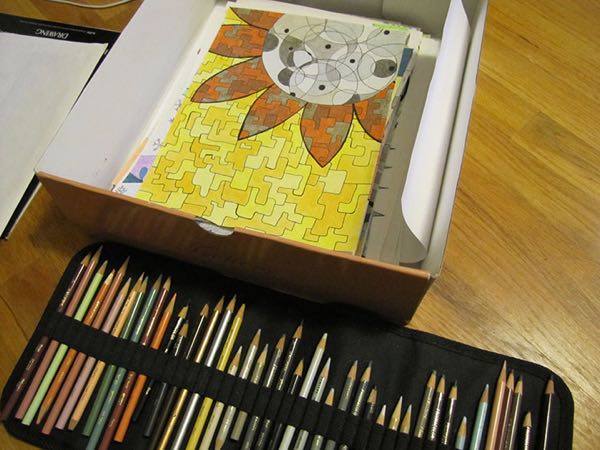
There was no substitute for having these rules and setting boundaries. It was easier to function, stay focused, and be creative. My rules were effective for me and the drawings became my new form of journaling as well as a creative outlet.
Why Writers Must Commit 100 Percent to Their Goals
My husband was convinced that this drawing box was a treasure chest of waiting-to-be-published stories. He encouraged me to take the drawings to the next level and I agreed.
I wrote stories and paired them up with the characters I had drawn. I made book dummies and sent them out to publishers. I enrolled in design classes at a community college. The first week there I met with each teacher and established my intention to make a book. I was motivated.
And then my husband died. Suddenly. He was 45 years old. I was 44 and our boys were 11 and 14 years old.
In the fog of grief I realized I had energy for very little. But I knew I had to create a children’s book if only because my husband had believed in me. I had to do it as a memorial for him. As healing for me. As proof to my kids that our life could go on.
The challenges of anxiety, self-doubt, isolation, overwhelming demands, emotional exhaustion, absence of hope for my future, and lack of necessary skills each made their appearance during the year it took for me to figure out just how I was going to publish my book.
I had never in my life been more determined to accomplish something and each time one of those negative positions arose I would yell at it to go away. Nothing was going to stand in my way and I was not going to let myself slip back into my old journal patterns. This goal was non negotiable.
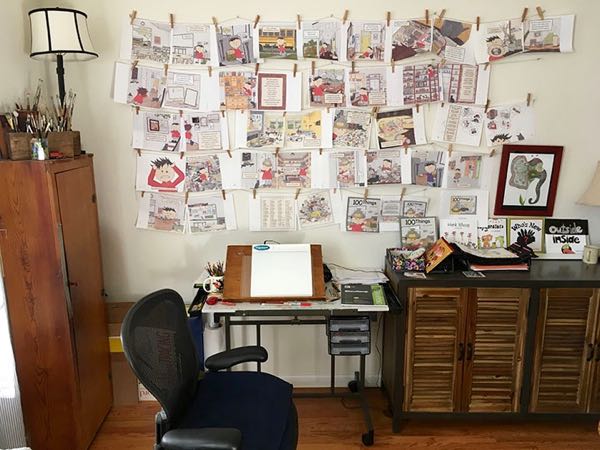
Sometimes the Only Way to Move Forward is to Get Help
There was no way I was going to achieve any part of this goal on my own. There were too many unknowns. All I had were drawings, a story, a design dummy and an artistic sensibility. I had to learn layout, book design, web site design, publishing, marketing, everything!
I hired a book consultant and an on-line marketing expert. I attended publishing seminars. I took classes in Adobe Photoshop, InDesign, and Illustrator. I looked for mentors and coaches everywhere I could find them.
I studied children books and spent hours in the library and book stores, as I did when my boys were very young. I talked with teachers and librarians. I set a budget, a project plan, and deadlines. I shared my goals with friends, who then would check in to see how things were going.
I spent money where it made sense but tried to do for myself the things that fit my interests and abilities.
Because I was in danger of hiding myself under my rock and letting my grief rule my world, I knew I needed help. But the reality is that whenever we have a goal that we have never attempted, it’s foolish and self-defeating to assume we can succeed alone.
It’s also a waste of resources. Someone else has probably had a similar goal, there is no reason not to find out how they succeeded. I wanted to make a book, not reinvent how to do that.
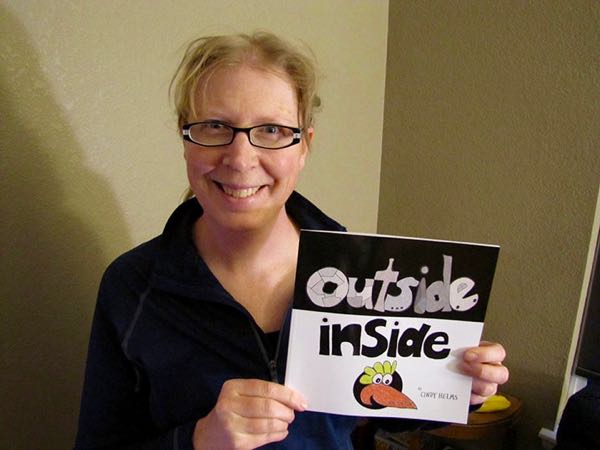
The Best Form of Procrastination for Writers
During the year after my husband passed, there were many emotional obstacles I had to face. Things I never thought I would ever have to consider confronted me and I did not feel equipped to make decisions about anything.
One morning I sat overwhelmed and paralyzed at my desk, facing a stack of papers I had to sort through, make phone calls regarding, or agonize whether to shred or not, when I turned to my book project and thought, “I’ll just work on that for a while instead. Perhaps later I will muster the emotional fortitude to return to the pile.”
By including my book project as a grounding point, I was able to work my way through both monumental tasks: my first year of widowhood, and my first taste of publication.
I continue to allow my books to be the thing I do while avoiding other unpleasant tasks such as ridding the journal-free basement of spiders, cleaning toilets, vacuuming the car, or scheduling a dentist appointment. Eventually all those other tasks get accomplished but it’s surprising how much drawing can get done while I am avoiding them!
Advice for a Young Writer: Let Go of Other’s Opinions
So many artists I meet have a fear of criticism. They can’t stand the thought of someone making a negative comment about something they have invested with a heart and a soul. Like a mama being defensive about her child, an artist is sensitive to her creations.
I was no different and it’s one of the reasons I never pursued galleries or exhibitions.
When I lost my husband though, something inside me cracked and I no longer cared what anyone’s opinions might be. That fear completely dissipated. It didn’t matter what anyone said. It didn’t matter how my artwork would be received.
I thought about my kids and how my husband and I had cared so much about raising them but in the end, they would leave our tiny nest and be on the world stage, interacting, creating and critiquing. I believe in my kids and nothing anyone might say about them could ever change that fact. I am just so proud they are mine.
My books take on this same quality. I work on them, make changes, get feedback, edit, redraw, and redesign during a process that allows for alterations and improvements. I raise them up into something I am proud of.
Then the time comes when I flip the switch and they go out into the world. At that point, they become public property, open for commentary, debate, review. I am really honored that they become the topic of conversation.
I let go of my need to control people’s responses and learned not to be driven by other opinions. There is no need to wait for tragedy to make this switch. There is no reason to horde our creativity when there is so much of it lacking in the world. Throw it out there into great conversation and see just how much it will contribute. The surprises that come about are so much better than the fear that isolates.
That is the advice I would offer to younger artists, authors, or illustrators: don’t hold back and don’t try to be like anyone else. Put yourself out there and don’t worry about the responses, positive or negative. Give something life and then let it go and move on to the next goal.
* * *
Cindy Helms has been studying art and art history since the late 1980s when she took her first classes in figure drawing and art history. She studied political science and international studies at DePauw University and the University of Denver. She studied design, art and art history at the Art Student League of Denver, Aurora Community College, and abroad in Vienna, Budapest, Prague, and Valladolid, Spain. She currently writes and illustrates children’s books including Honk Whoop (2017), Polygonsters (2017), Who’s New (2016), Outside Inside (2015) and has a new release in 2018, 100 Things.
For more information on Cindy and her work, please see her website and Amazon page, or her book reviewer’s page.
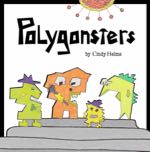 Polygonsters: Polygonsters are mean.
Polygonsters: Polygonsters are mean.
They are rude.
They are the worst bullies ever.
They are coming to Ponderville! How will Birdie and his friends stop their town from being destroyed? Will they also be mean and rude? Or is there another way?
Available at Amazon.
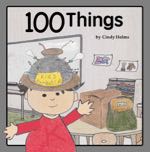 100 Things: The 100th day of school is a BIG deal.
100 Things: The 100th day of school is a BIG deal.
When Kid finds out he has an assignment due tomorrow, he is excited. This is the first important project of his school career. But as he thinks about how to do his project, he becomes overwhelmed with options and has trouble deciding.
100 Things engages the imagination and shows creativity and ingenuity. With a charming, playful personality, and an inquisitive companion, Kid demonstrates how to have fun AND get the job done.
Available at Amazon.


Wonderful article. Terrific advice. It helps me keep moving forward with small submissions and the stalled task of writing a second book. I think “task” might be the problem word. I haven’t found the joy in it yet. Thank you.
Cindy has some great ideas, eh? Good luck moving “task” to “joy,” Elaine! :O)